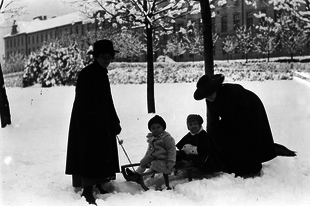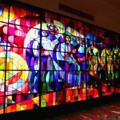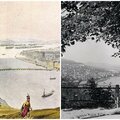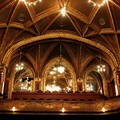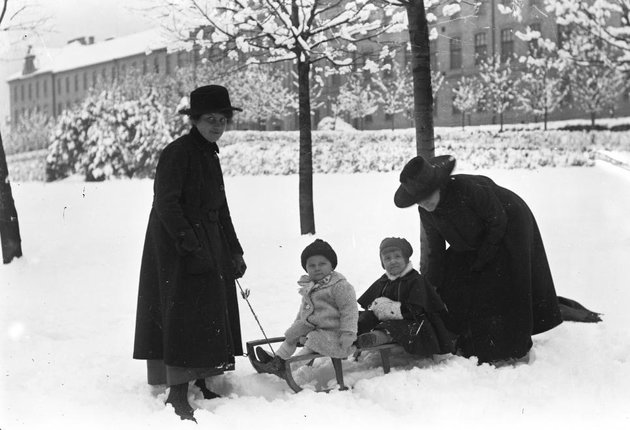
A snapshot of winter from 1920 / Source: Fortepan
“The mean temperature in Hungary was generally minus 0.5 °C in the 20th century. As a result of the warming climate this value rose to zero Celsius between 1981 and 2010.” Source: A study from 2012)
This winter we had no reason to complain about the lack of freezing temperatures. But what about the winters of the last years and decades?
Legendary winters of the past century
The winter of 1939-40 is considered to be the coldest in the past century, as the national mean temperature in January reached -10 °C. The following scenes were captured by József Doutlik at Felsőgöd. The pictures portray well that in 1940 huge, piled up blocks of ice lined the Danube.
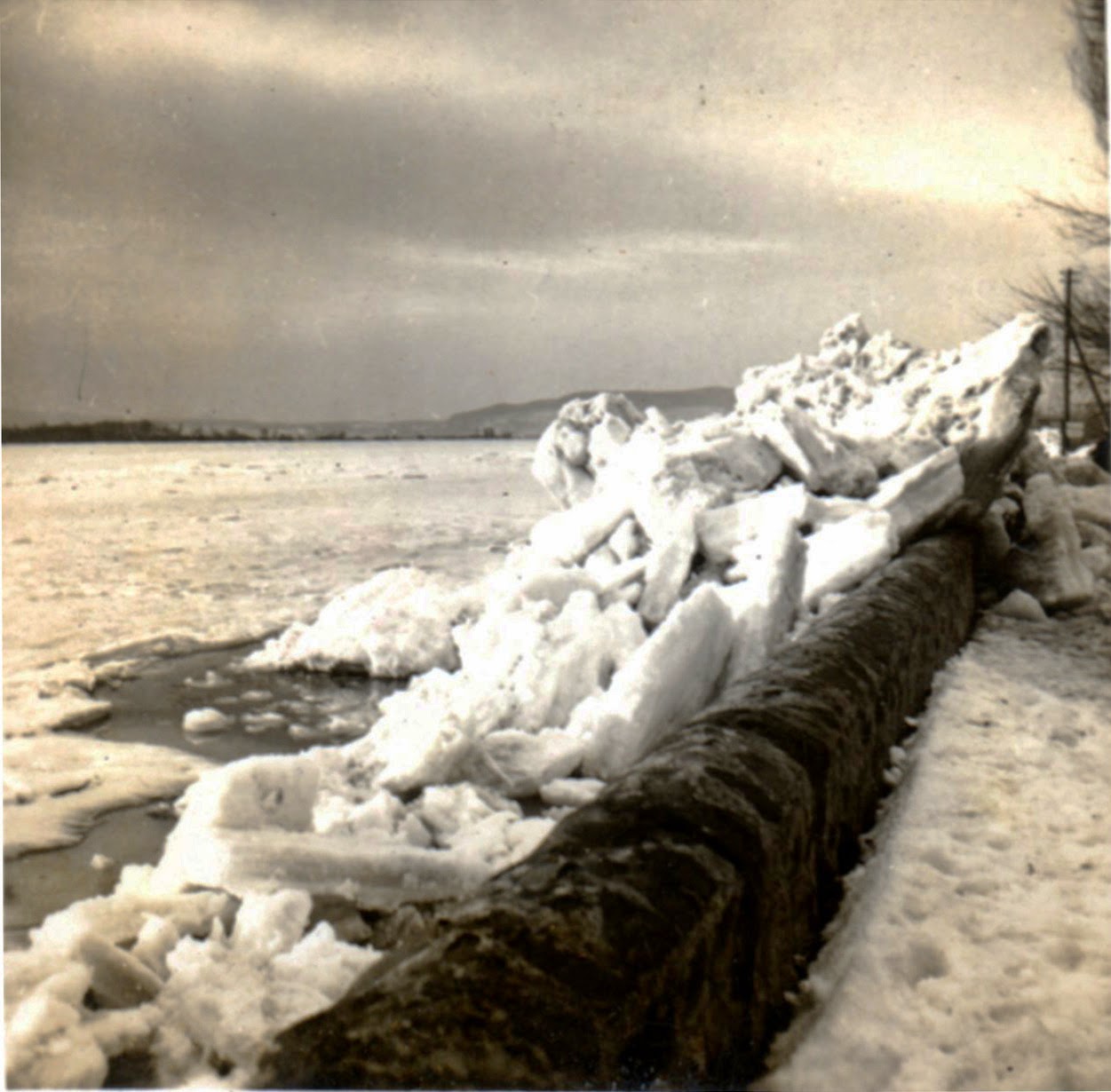
 The human shapes look miniscule compared to the ice-barriers built by the Danube in the winter of 1940. Source: Dunai szigetek webpage
The human shapes look miniscule compared to the ice-barriers built by the Danube in the winter of 1940. Source: Dunai szigetek webpage
In February 1963 the Carpathian basin was yet again conquered by extreme cold. Even pedestrian traffic was allowed on the frozen Danube between Göd, Szigetmonostor and Surány.
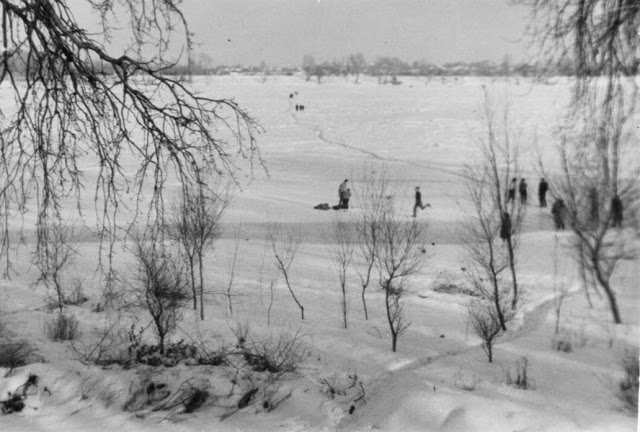 Crossing the frozen Danube in 1963. A small trail shows the safe route designated and examined by the authorities. Photo by Miklós Gallé / Source: Dunai szigetek
Crossing the frozen Danube in 1963. A small trail shows the safe route designated and examined by the authorities. Photo by Miklós Gallé / Source: Dunai szigetek
It was the steady snowing that made the winter of 1986-87 truly memorable. The result was a 30-50 centimeters high blanket of snow, which posed quite an obstacle for traffic, turning even the simplest of everyday activities into a challenge. Some of you must also hold personal memories of this season.
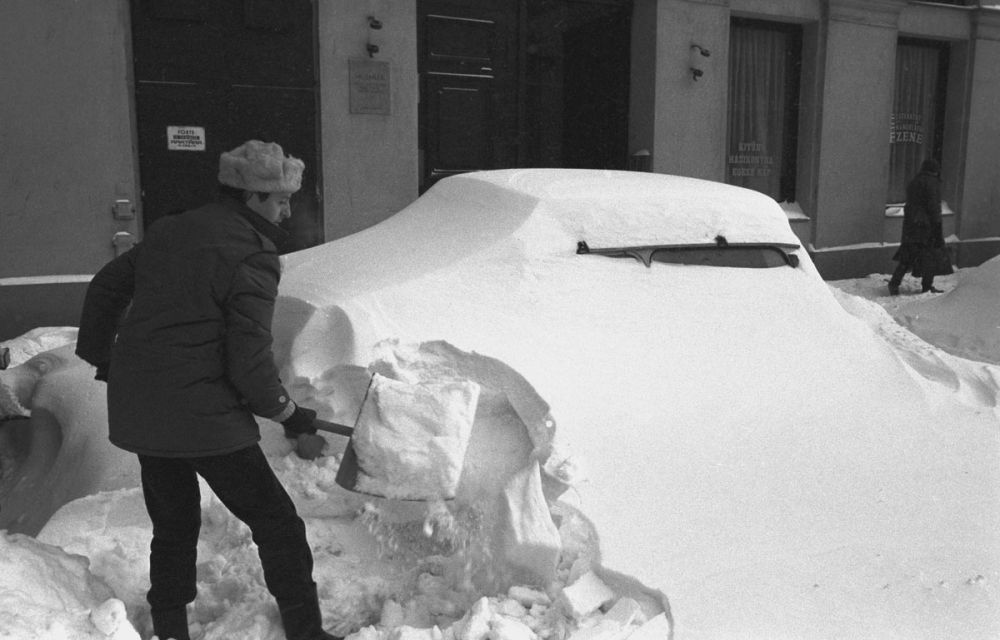 Cars and roads covered with snow in January 1987 / Photo: MTI, Attila Kleb; Source: nlcafe.hu
Cars and roads covered with snow in January 1987 / Photo: MTI, Attila Kleb; Source: nlcafe.hu
 In Borsod County, the vehicles of the Hungarian Army were also used to free cars stuck in the snow
In Borsod County, the vehicles of the Hungarian Army were also used to free cars stuck in the snow
Photo: MTI, István Kozma; Source: nlcafe.hu
Life goes on even in ice and snow
Nowadays in snow-bound situations the snow plows send some hope along the way, that can of course never arrive too fast. But what was going on back in the days? As the pictures show below, clearing snow was a lot more difficult procedure in the past, snow shovels seemed to be the ony way, although horse-drawn snow plows were the last resort. This comparison sheds a better light on our seemingly slow contemporary snow plows.
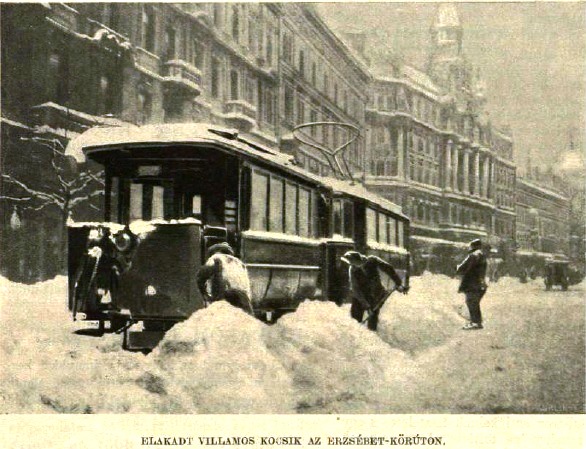
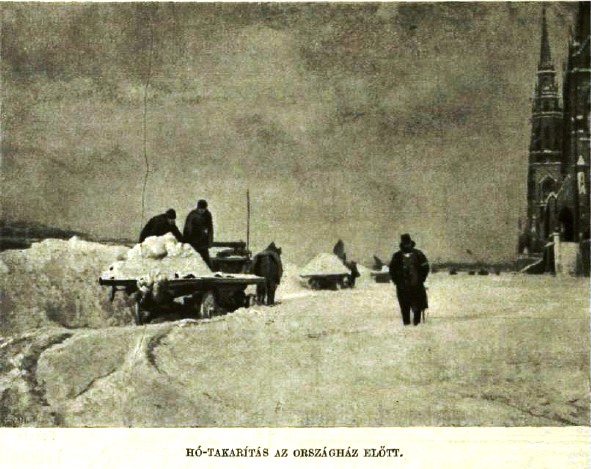
Pictures from the 1907 Vasárnapi Ujság (Sunday Press) periodical. The shoveled up snow was transported to parks, empty public places, or poured into the Danube and channels.
Source: Zoltán Fónagy: Mindennapok története
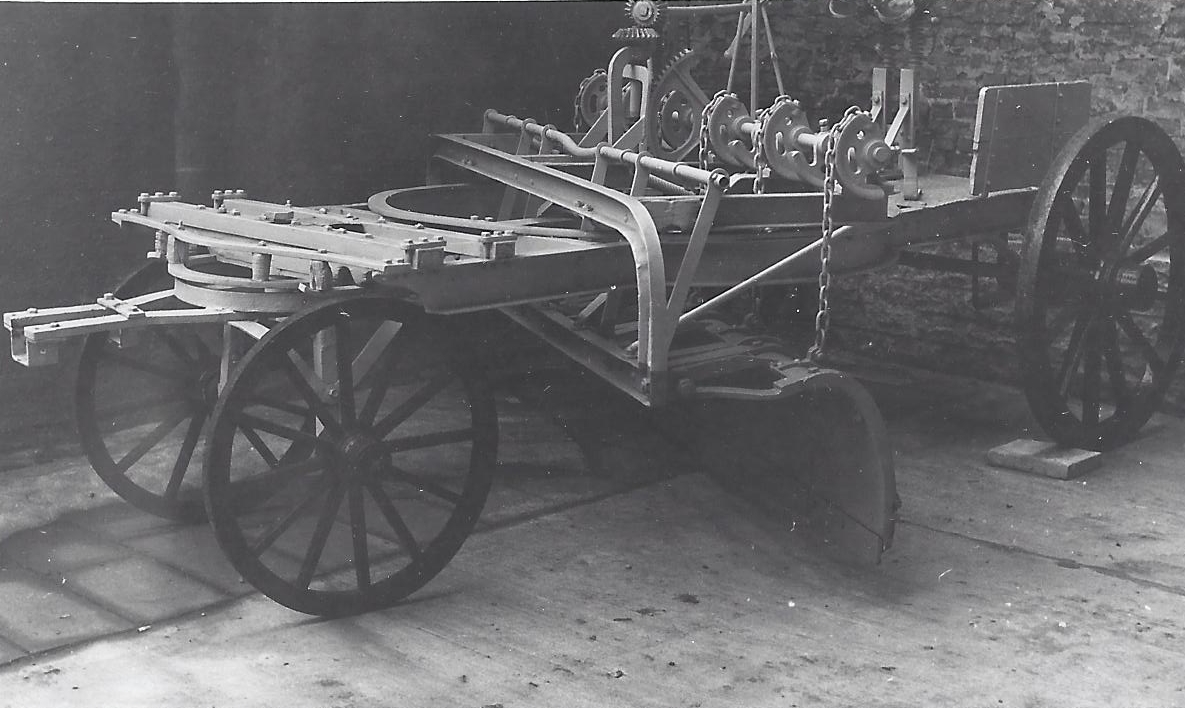 Horse-drawn snow plow from 1907.
Horse-drawn snow plow from 1907.
Source: Zoltán Fónagy: Mindennapok története If the level of snow reached three centimeters, the city put the horse-drawn snow-plows to work as well. These resourceful machines helped the street sweepers and the snow workers cleaning the roads.
Winter sports - if it’s already cold, let’s enjoy it!
Although the winter weather poses several difficulties and causes annoyance in following our daily routine, we shall also enjoy the advantages of the season, bundled up and in warm, lined boots. In wintertime we can visit many ice-skating rinks, the City Park Ice Rink (Városligeti Műjégpálya) has one of the best atmospheres and the citizens of Budapest have been skating there with the same enthusiasm for the past hundred or years.
Lately Lake Balaton has become the main stage for ice-skating and something that the Hungarian call ‘fakutyázás’ (A chair with runners, driven by sticks, used, mostly by young persons, for sliding on ice). We could admire the magnificent blocks of ice, the “revolving stage” or ice-carousel, or participate in the cross-Balaton sliding.
Sledging on the hills of Normafa can be a pleasant family program when it’s snowing, accompanied by the mulled wine, langosh (Hungarian specialty: deep-fried dough) and a variety of strudels to fit the season’s spirits. Not only are the nearby forests breathtaking, but we can also hear the crunching snow, something rarely experienced in the city. Almost any park can be suitable for building a snowman, but you can also organize a competition with snowman embracing non-traditional shapes. In case we have more time than only an afternoon, perhaps even a few days to enjoy the snow, then this is the best time to go skiing.
Therefore, we must conclude that wintertime, and the snow blanket that comes with it, still attempt to fulfill the same role as in the past; slowing life down, granting some rest to animals, plants and humans alike. If we do our best to go by this idea and slow life down as much as possible, then we can indeed use this season to relax.
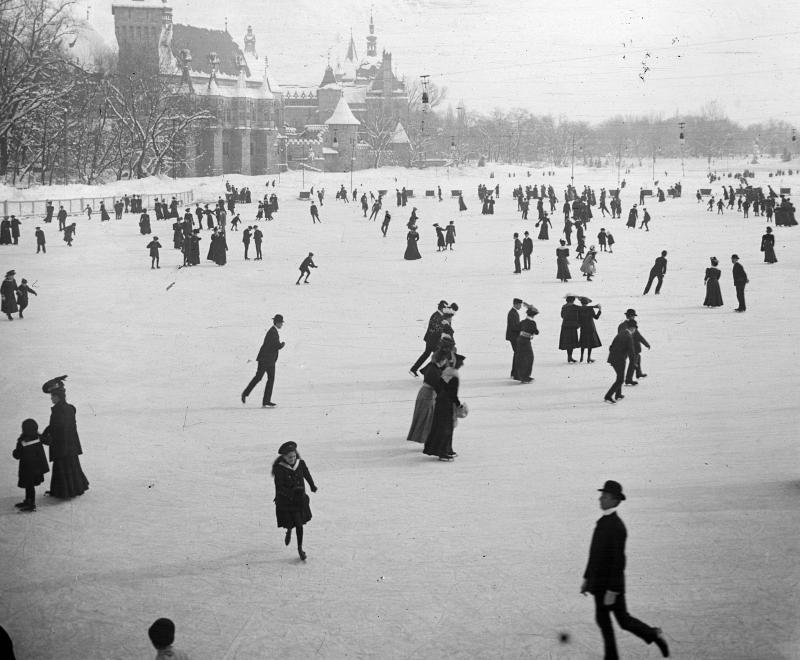 Skating on the City Park Ice Rink in 1907 with the Vajdahunyad Castle in the background
Skating on the City Park Ice Rink in 1907 with the Vajdahunyad Castle in the background
Source: Fortepan
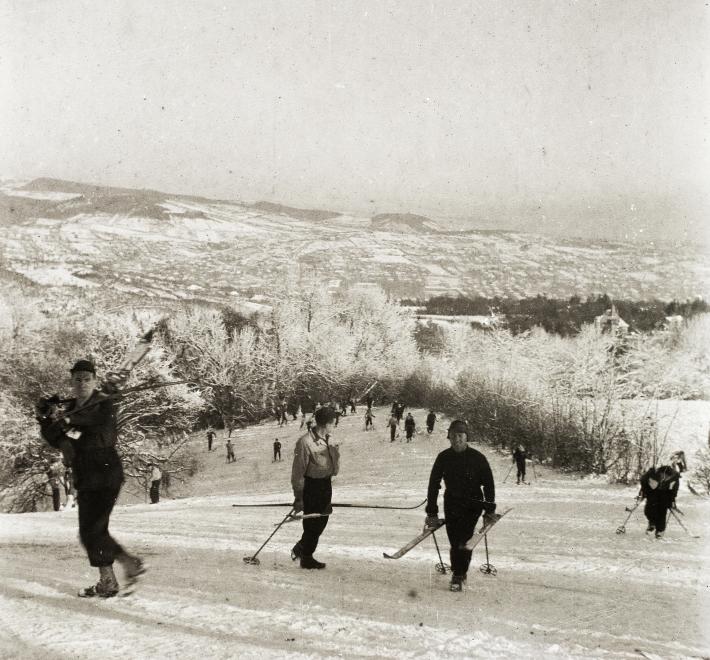 Skiing on the Normafa-slope in the winter of 1936.
Skiing on the Normafa-slope in the winter of 1936.
Source: Fortepan
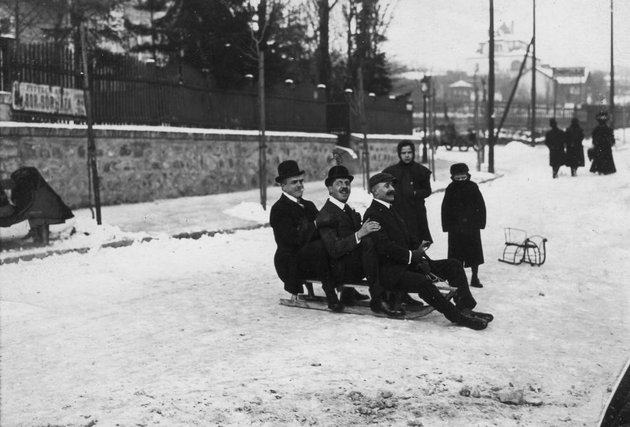 The gentlemen captured in this photo are obviously having a great time on the sledge in 1908.
The gentlemen captured in this photo are obviously having a great time on the sledge in 1908.
Source: Fortepan, Múlt-kor periodical
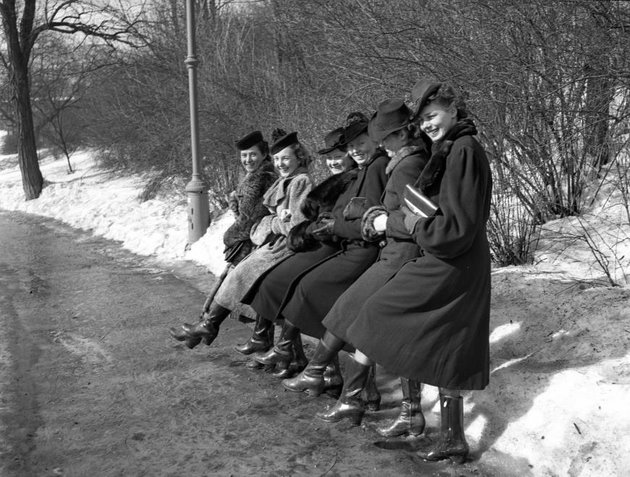 Some ladies are rejoicing in the Városmajor park of Budapest, in 1940. Maybe they already feel spring approaching?
Some ladies are rejoicing in the Városmajor park of Budapest, in 1940. Maybe they already feel spring approaching?
Source: Fortepan, Múlt-kor periodical
 This bank of snow from 1942 looks like a small hill compared next to the pram.
This bank of snow from 1942 looks like a small hill compared next to the pram.
Source: Fortepan, Múlt-kor periodical
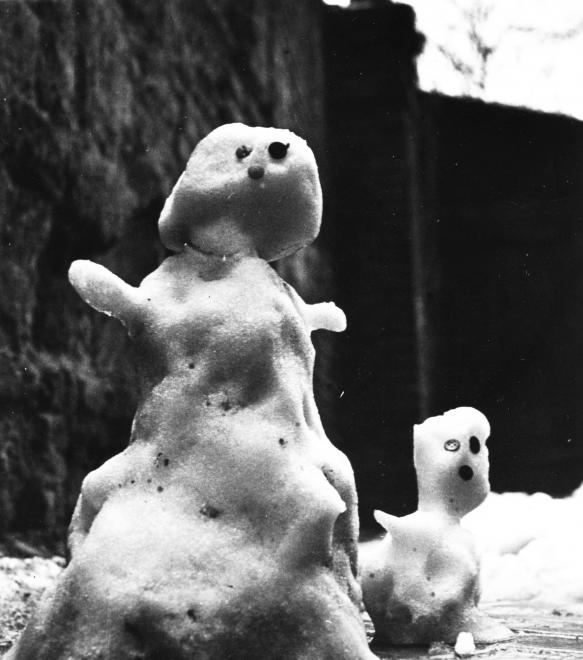 And finally... love it or hate it, once we must say goodbye to the winter months and the joys they bring. The snowmen in the picture did the same in 1982, and took off for good to give room for the eagerly anticipated spring.
And finally... love it or hate it, once we must say goodbye to the winter months and the joys they bring. The snowmen in the picture did the same in 1982, and took off for good to give room for the eagerly anticipated spring.
Source: Fortepan

